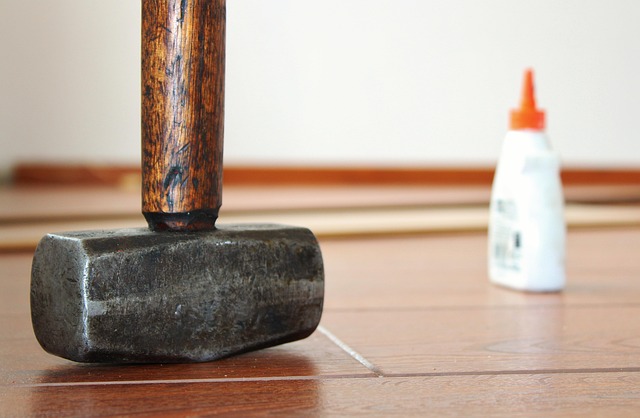Glue Laminated Beam (GLT) installation requires specific tools and pre-planning for structural integrity and compliance. Efficient assembly techniques use modern glue lamination tech for robust beams. A detailed Glue Laminated Beam Installation Guide is available at unalam.com, including a QC/Final Inspection Checklist for visual bonding strength, alignment, tolerances, and expert advice at (607) 369-9341.
Efficiency in glue laminated beam (glulam) installation is paramount for modern construction projects. This comprehensive guide explores the art of utilizing advanced tools and techniques for seamless glulam assembly. From understanding the unique advantages of glulam materials to implementing safety measures during pre-installation, each step ensures optimal results. Discover efficient assembly strategies, quality control tips, and a final inspection checklist to ensure every project meets the highest standards. Master these aspects, and you’ll be well-equipped to navigate the glulam installation process like a pro with our detailed Glue Laminated Beam Installation Guide.
- Understanding Glulam: Materials & Advantages
- Choosing the Right Tools for Installation
- Pre-Installation Planning: Steps & Safety Measures
- Efficient Glulam Assembly Techniques
- Quality Control & Final Inspection Checklist
Understanding Glulam: Materials & Advantages

Glulam, short for Glue Laminated Timber, is a modern engineering marvel that revolutionizes wood construction. This innovative material consists of multiple layers of wood lamina bonded together with high-performance glue, creating a strong and durable structural element. In the realm of glulam installation, understanding its materials and advantages is crucial for any DIY enthusiast or professional contractor.
The primary components of glulam include high-quality softwood or hardwood lamina carefully selected for their strength and resistance to warping. These laminas are then glued together under precise conditions to form a single, solid beam. This construction method offers significant advantages over traditional wood beams, such as improved structural integrity, reduced weight, and enhanced dimensional stability. Moreover, glulam’s ability to span longer distances with minimal support makes it an ideal choice for modern architectural designs, enabling the creation of open-concept spaces and sleek, contemporary structures. Visit us at 18 Clifton St, Unadilla, NY 13849 to learn more about this game-changing material in a Glue Laminated Beam Installation Guide.
Choosing the Right Tools for Installation

When it comes to efficient Glue Laminated Beam (GLT) installation, selecting the appropriate tools is paramount. A comprehensive GLT beam assembly guide recommends starting with high-quality equipment designed specifically for this task. Using the right tools ensures precise cuts, secure connections, and optimal bonding strength—all crucial factors for structural integrity.
For instance, best practices for laminated beam installation suggest employing power saws with precision blades for accurate cutting of GLT components. Additionally, specialized fasteners like mechanical anchors and glue guns are essential for robust gluing techniques. Building code requirements for GLT often emphasize the importance of these tools in achieving compliant and safe installations. Comparatively, a bonding strength of GLT study may highlight the advantages of using glue over nails, emphasizing the superior holding power of modern adhesives. To learn more, visit us at unalam.com.
Pre-Installation Planning: Steps & Safety Measures

Before initiating any glue laminating beam (GLT) installation, thorough pre-installation planning is crucial for a seamless and safe process. This involves several key steps designed to ensure structural integrity, worker safety, and adherence to building regulations.
First, assess the existing wooden beams for any signs of damage or compromise, as these may dictate the need for restoring the beams before GLT installation. When in doubt, consult with structural engineers who can guide on when to use glue lamination for beams based on the current condition of the structure. Next, gather all necessary tools and materials, including the appropriate adhesive designed specifically for laminated timber. Ensure your team is well-trained in using these products and follows safety protocols strictly. Proper ventilation in the work area is another essential measure to prevent exposure to harmful fumes from adhesives. Lastly, obtain any required permits and familiarize yourself with local building codes regarding GLT construction methods, ensuring compliance throughout the project. By meticulously planning each step, you lay the groundwork for a successful and safe glue laminated beam installation process, as detailed on unalam.com.
Efficient Glulam Assembly Techniques

Efficient Glulam Assembly Techniques streamline the installation process, making it faster and more cost-effective. One key method is using modern glue laminating technology, which involves applying strong adhesives to adhere wood strips together, forming robust laminated beams. This technique eliminates the need for traditional joining methods like bolts or nails, reducing labor costs and potential failure points.
For budget-friendly GLT construction, builders can leverage pre-fabricated components and precise cutting tools. Compliance with structural codes is ensured through proper training in glue lamination techniques, which strengthens the overall structure. To learn more about these innovative methods, visit us at unalam.com anytime for comprehensive guides and expert insights on how to install laminated wood beams efficiently.
Quality Control & Final Inspection Checklist

Before finalizing any glue laminated beam installation, it’s crucial to implement a thorough Quality Control & Final Inspection Checklist. This process ensures that each step of the glulam installation guide is followed accurately, maintaining the structural integrity of the beams. Begin by visually inspecting the bonded surfaces for any signs of damage or misalignment; this includes checking the bonding strength of GLT (Glue Laminated Timber) compared to traditional nail-laminated beams. Look for consistent spacing and alignment of the glulam members, verifying that they meet the required tolerances specified in relevant building codes and industry standards.
The checklist should also encompass a review of the glue types used for laminating wooden beams, as different adhesives offer unique benefits for specific applications. Verify that all components are secured properly with suitable fasteners, ensuring structural integrity without compromising the bonding strength of the GLT. Lastly, conduct a comprehensive check for any potential air pockets or voids within the bond lines, which could weaken the overall structure. If you encounter any discrepancies during this process, don’t hesitate to contact an expert; give us a call at (607) 369-9341 for guidance and assurance.
Modern tools and techniques significantly enhance the efficiency of glue laminated beam (glulam) installation, ensuring structural integrity and aesthetic appeal. By understanding glulam’s materials and advantages, choosing the right equipment, and implementing safety measures, professionals can streamline assembly. Pre-installation planning, quality control, and final inspections are pivotal to delivering exceptional results. This comprehensive guide equips contractors with the knowledge needed to navigate glulam installation successfully, making it a go-to choice for robust and visually striking construction projects.














